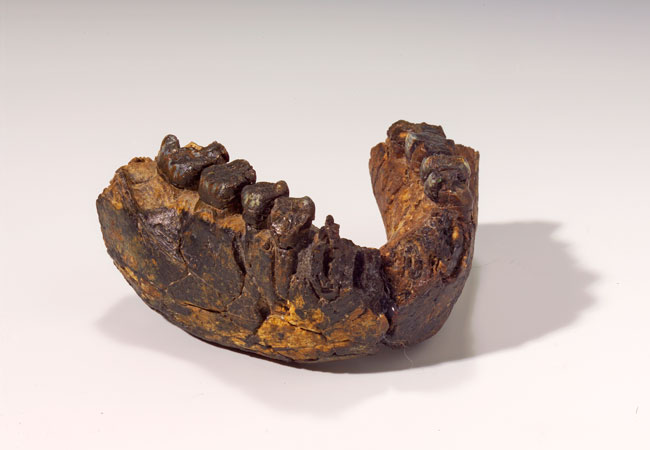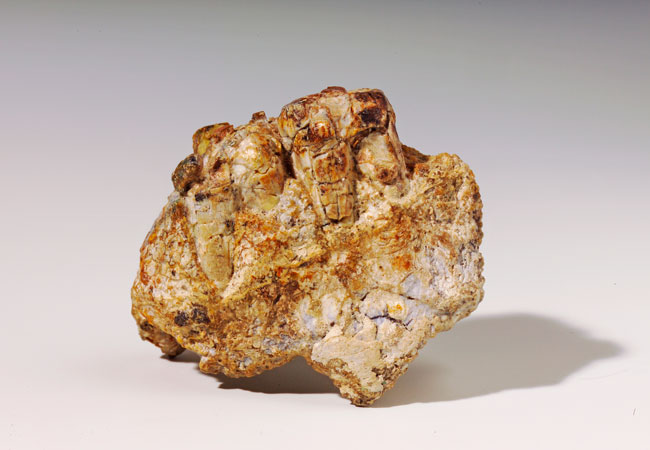
To eat what grows locally – today’s dietary trend was every day’s practice for prehistoric humans. Studying fossil tooth enamel, German researchers from Goethe University Frankfurt and the Senckenberg research institutes discovered that the early hominins Homo rudolfensis and the so-called Nutcracker Man, Paranthropus boisei, who both lived around 2.4 million years ago in Malawi, were surprisingly adaptable and changed their diet according to the availability of regional resources. Being this versatile contributed to their ability to thrive in different environments. The new findings from southeastern Africa close a significant gap in our knowledge, according to the researchers’ paper published today in the Proceedings of the National Academy of Sciences, USA.
Those who wonder what our ancestors ate around 4 to 1.4 million years ago may find answers in the data from fossil sites in the East African Rift Valley in modern-day Kenya and Ethiopia, as well as in the cave sites of South Africa. These two regions are separated by around 3,000 kilometers. Until recently, the diet of early hominins inhabiting this gap in the “Cradle of Humankind” remained an enigma to science.
Scientists from Goethe University Frankfurt and Senckenberg examined fossilized tooth enamel of three Homo rudolfensis and Paranthropus boisei individuals. They lived around 2.4 million years ago in the southern part of the East African Rift Valley around Lake Malawi and thus in the center of the blind spot regarding prehistoric human diet. Tooth enamel is the most durable substance found in vertebrates. Even after millions of years, the carbon and oxygen isotopic compositions in the enamel allow to reconstruct an individual’s diet. Geochemical analyses enable the distinction between proportions of ingested plants which use different photosynthesis.

“The diet of studied Homo rudolfensis and Paranthropus boisei consisted to 60 or 70% of plants using C3 photosynthesis which grew in the Rift Valley. We assume these were primarily parts of trees such as fruits, leaves, and tubers. Parts of C4 plants, which dominate the open savannas of Africa today, made up a significantly lower portion of their diet. One of the Homo rudolfensis individuals even fed almost exclusively on C3 plant material,” the study’s lead author, Dr. Tina Lüdecke of the German Senckenberg Biodiversity and Climate Research Centre, explains.
As reconstructed by the team, the area around Lake Malawi in the early Pleistocene was teeming with a multitude of trees and other C3 plants. Compared to more open habitats in eastern Africa, a cooler and wetter climate favored the spread of wooded savannas here. Additional analyses of fossil teeth from migrating prehistoric horses and antelopes reveal that a sufficient supply of C4 plant material must have been available further away from Lake Malawi. Yet, Homo rudolfensis and Paranthropus boisei preferred to stay close to the lake not only for water but also to benefit from locally available resources.
Paranthropus aethiopicus, a contemporary of the study’s subjects Homo rudolfensis and Paranthropus boisei, lived farther north in the East African Rift Valley. Contrary to the inhabitants of the region around Lake Malawi, his diet involved a significantly higher fraction of C4 plants. Such C4 plants were more easily available in the dry grasslands of the East African Rift Valley that Paranthropus aethiopicus called home. “Surprisingly this shows that already 2.4 million years ago some early hominins were able to adjust their diet to their environment,” says Lüdecke.

This finding is complemented by previous analyses of Paranthropus and Homo representatives living less than 2 million years ago, who continued this type of behavior. Those who dwelt in the South African forests continued to primarily eat C3 plants, while their relatives in the drier north increasingly fed on C4 plants found in their habitat, which continue to constitute the primary food source for many humans on earth today.
“To the best of our current knowledge, there were no other primates that handled their dietary needs in such a flexible manner. The fact that early hominins were able to adapt their diet specifically to different environmental conditions undoubtedly was one of the keys to the success of Homo sapiens,” summarizes PD Dr. Ottmar Kullmer, one of the study’s co-authors, from the Senckenberg Research Institute Frankfurt and Goethe University in Frankfurt.
[dt_call_to_action content_size=“small“ background=“fancy“ line=“true“ animation=“fadeIn“]
Publication: Lüdecke, T. et al. (2018): Dietary Versatility of Early Pleistocene Hominins. PNAS, doi: 10.1073/pnas.1809439115; https://www.pnas.org/content/early/2018/12/05/1809439115
[/dt_call_to_action]








